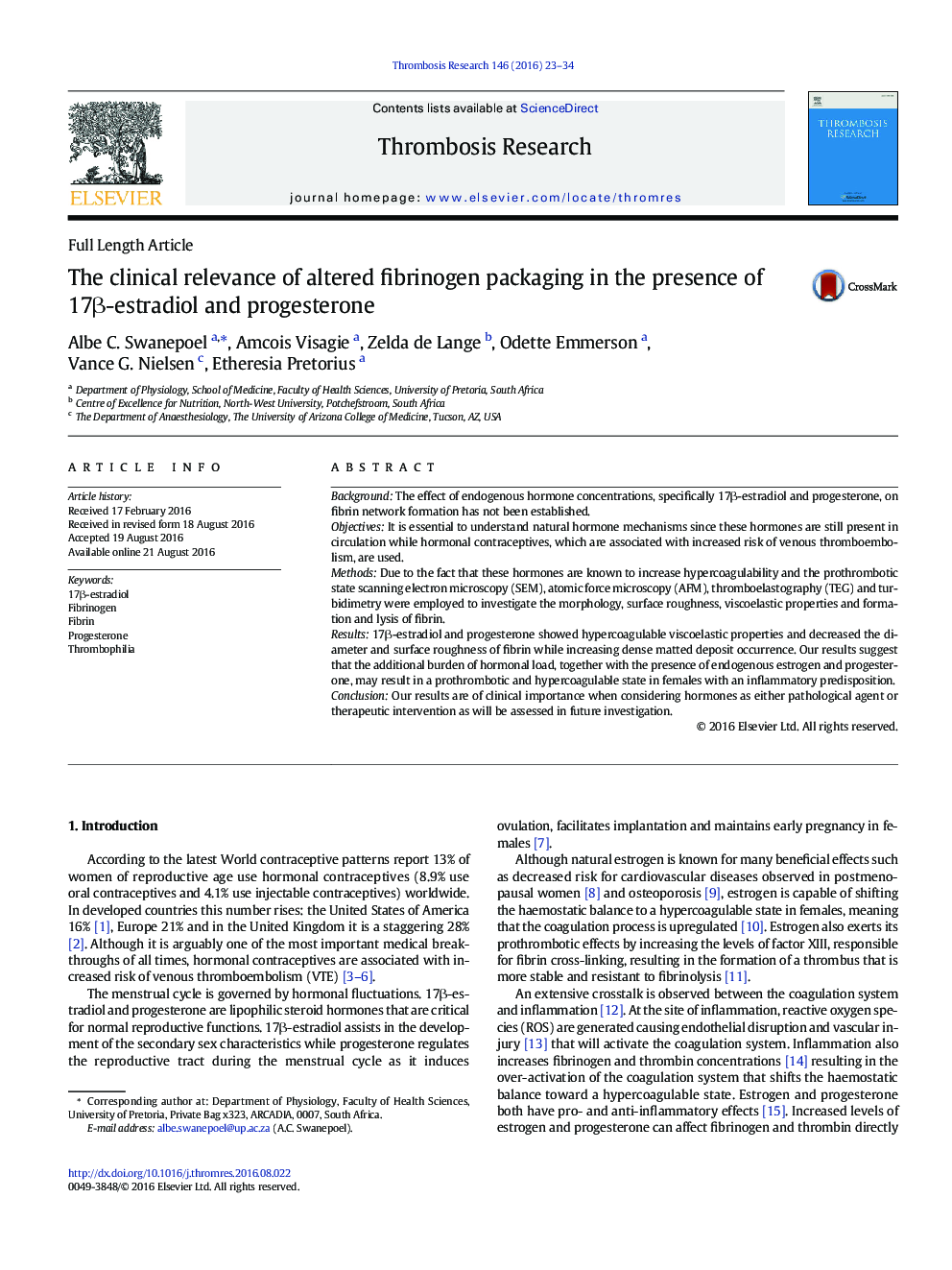| Article ID | Journal | Published Year | Pages | File Type |
|---|---|---|---|---|
| 6000342 | Thrombosis Research | 2016 | 12 Pages |
â¢The effect of 17β-estradiol and progesterone on fibrin network formation is unknown.â¢SEM, AFM and TEG provided insight regarding morphology, surface roughness and viscoelasticity.â¢17β-estradiol and progesterone are shown to induce a prothrombotic state.â¢The clinical importance when considering hormones as therapeutic intervention.
BackgroundThe effect of endogenous hormone concentrations, specifically 17β-estradiol and progesterone, on fibrin network formation has not been established.ObjectivesIt is essential to understand natural hormone mechanisms since these hormones are still present in circulation while hormonal contraceptives, which are associated with increased risk of venous thromboembolism, are used.MethodsDue to the fact that these hormones are known to increase hypercoagulability and the prothrombotic state scanning electron microscopy (SEM), atomic force microscopy (AFM), thromboelastography (TEG) and turbidimetry were employed to investigate the morphology, surface roughness, viscoelastic properties and formation and lysis of fibrin.Results17β-estradiol and progesterone showed hypercoagulable viscoelastic properties and decreased the diameter and surface roughness of fibrin while increasing dense matted deposit occurrence. Our results suggest that the additional burden of hormonal load, together with the presence of endogenous estrogen and progesterone, may result in a prothrombotic and hypercoagulable state in females with an inflammatory predisposition.ConclusionOur results are of clinical importance when considering hormones as either pathological agent or therapeutic intervention as will be assessed in future investigation.
